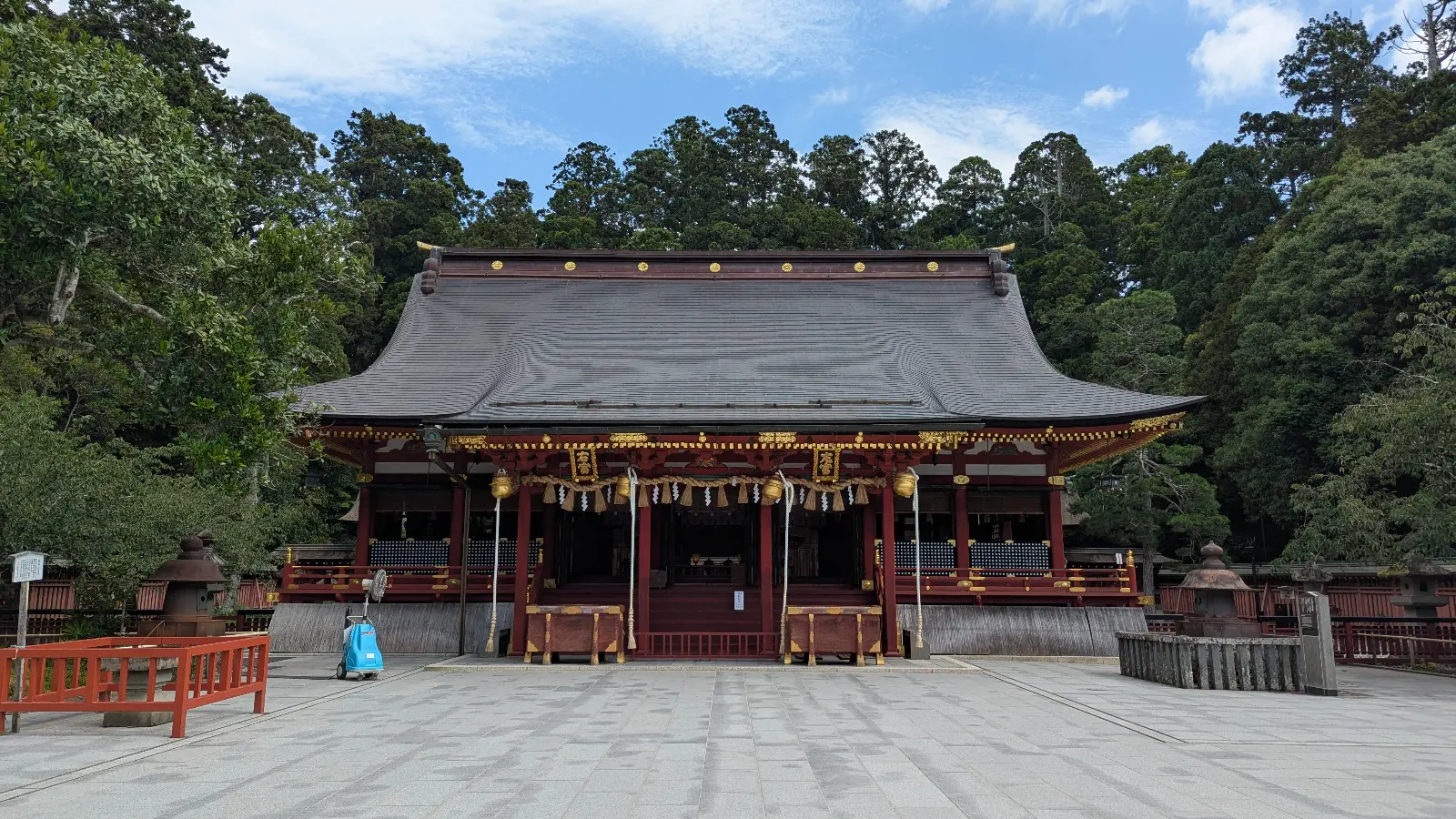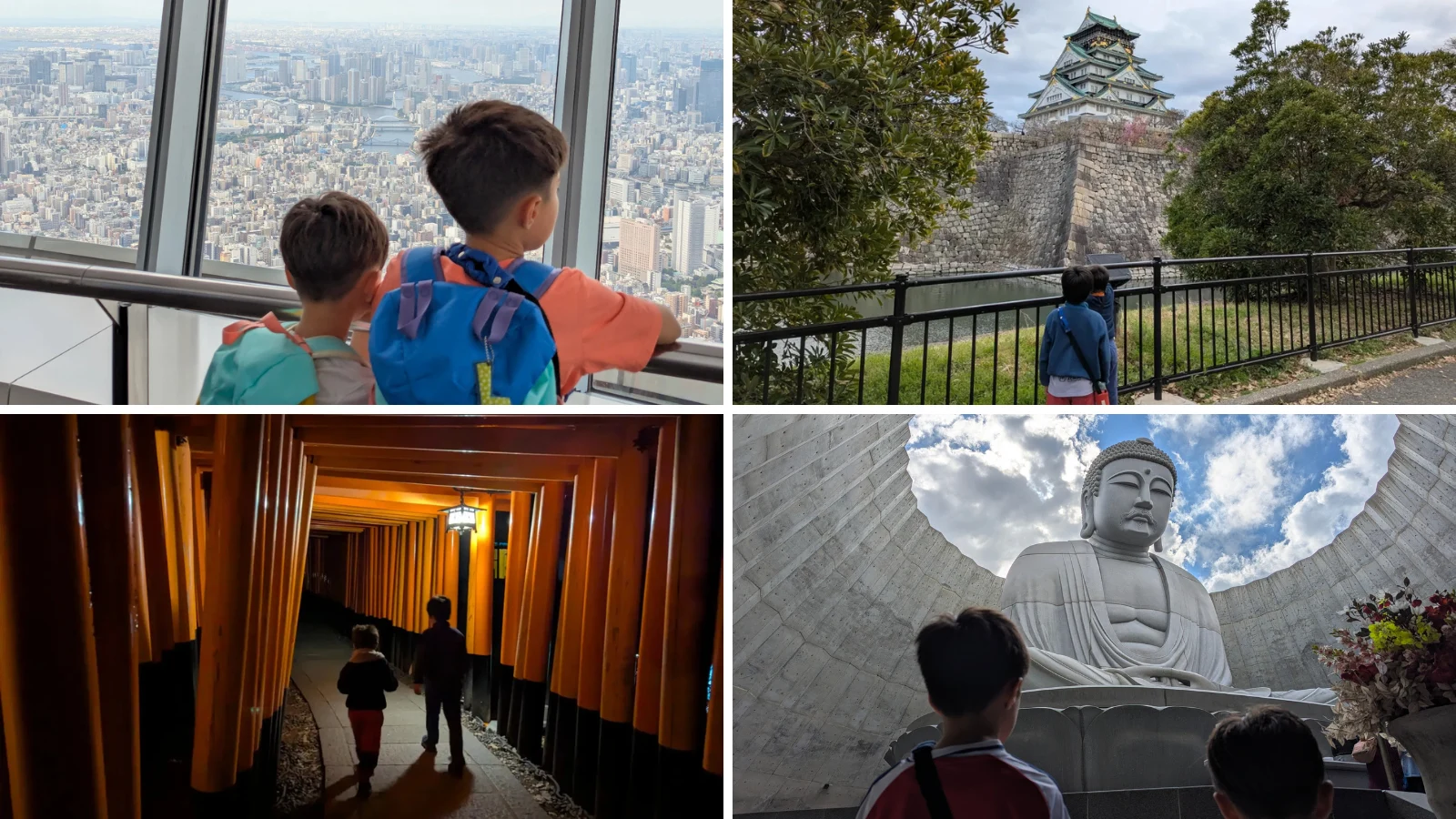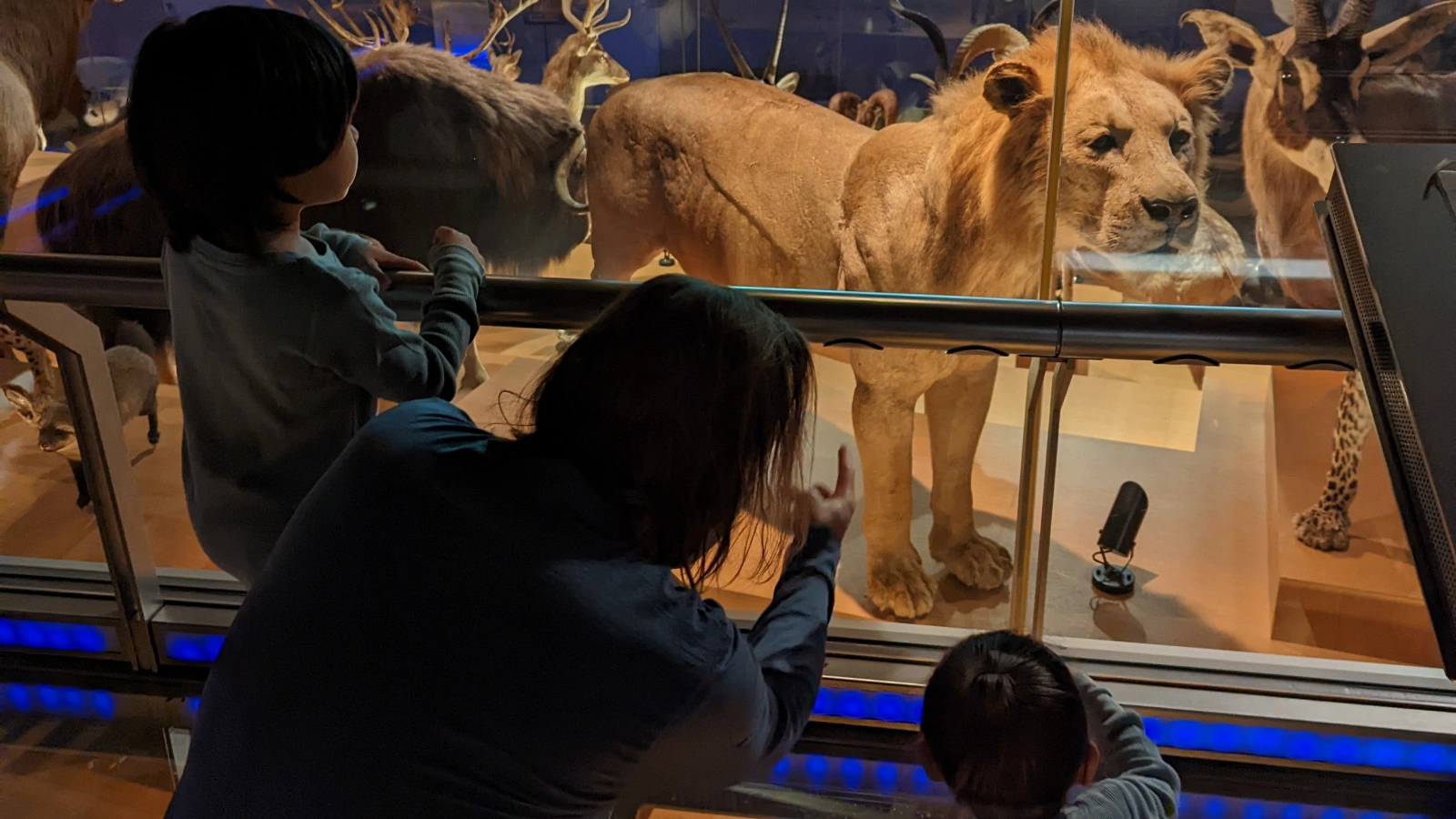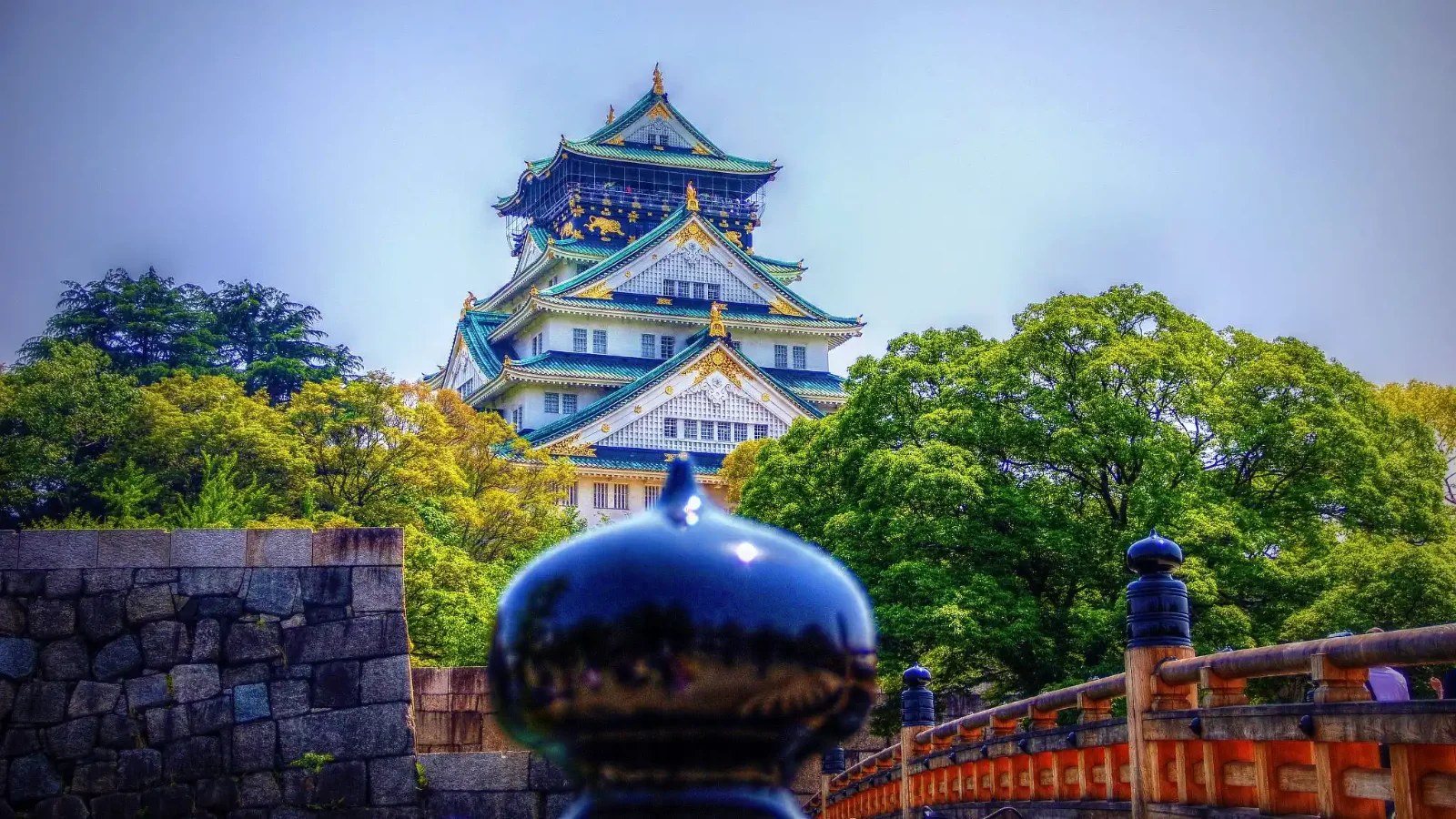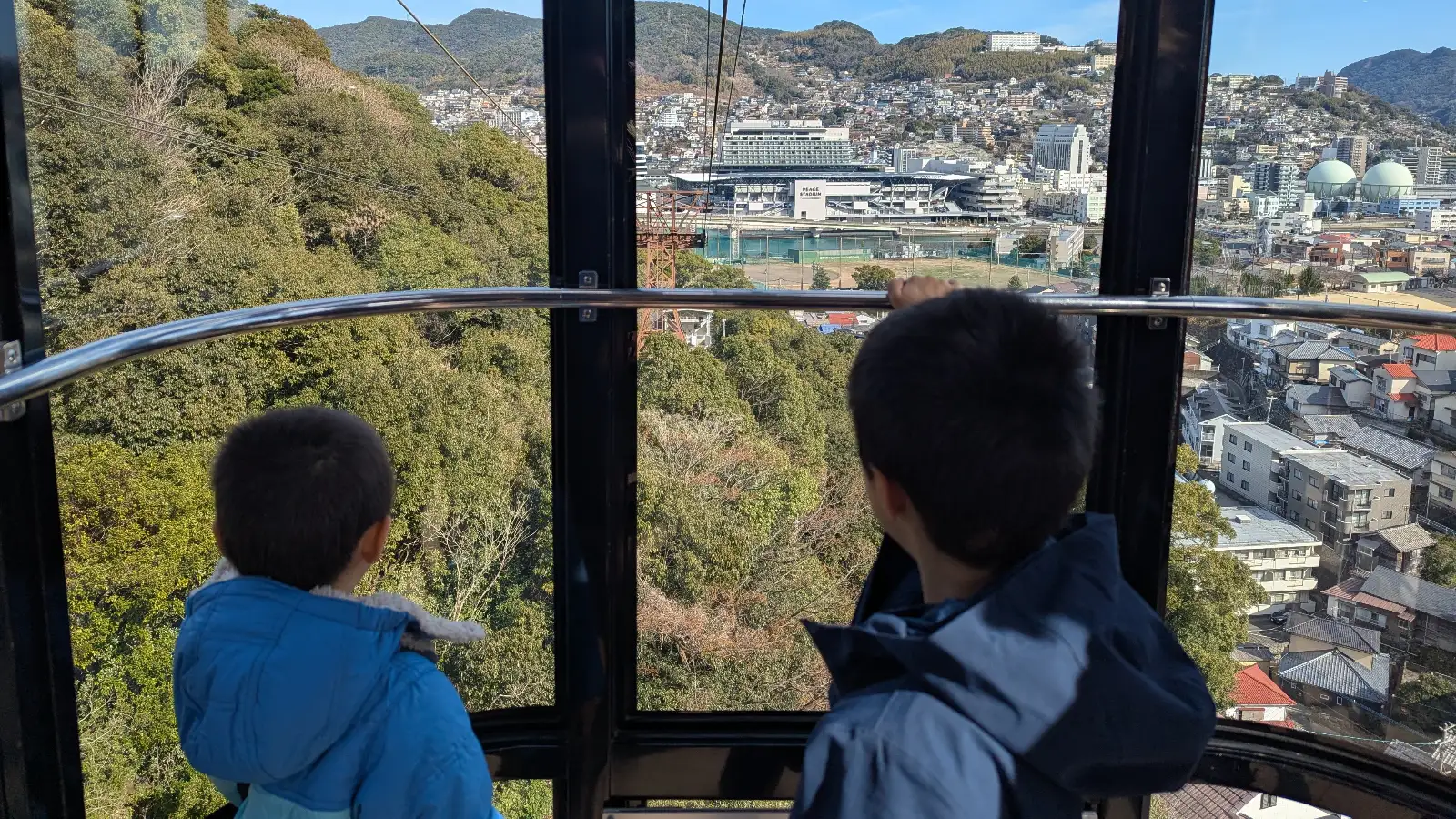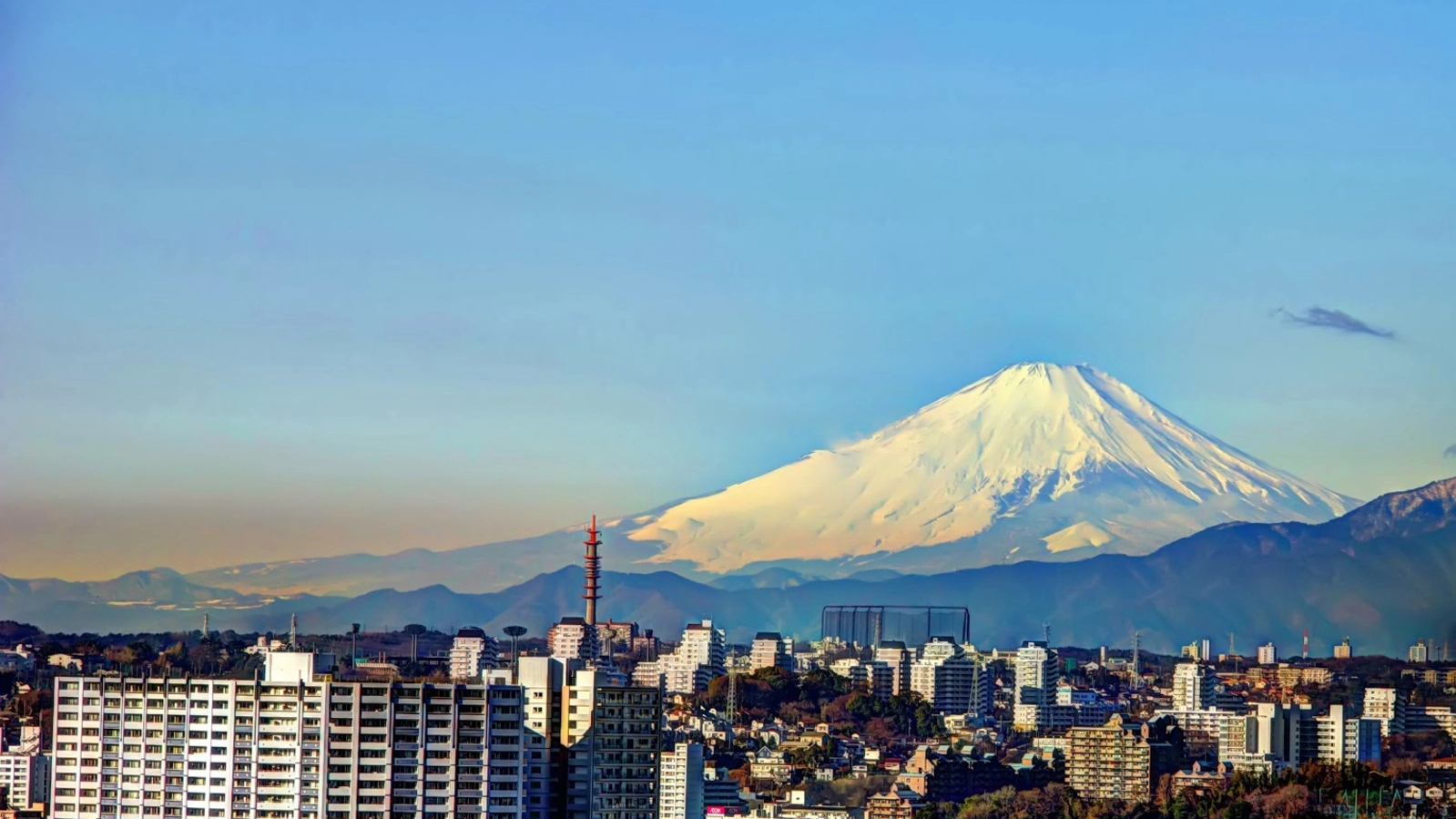
Planning a family trip to Japan can feel exciting, and a little overwhelming. With so much to see, eat, and experience, traveling to Japan with kids opens the door to unforgettable memories, but it also comes with unique questions. From how to move between cities to what to pack, this guide walks you through how to plan a family trip to Japan step by step. Whether you’re visiting Japan with children for the first time or just want a smoother experience, we’ll help you create a family itinerary that balances fun, culture, and plenty of snack breaks.
Disclaimer: This post contains affiliate links. If you click to purchase, it’s at no extra cost to you… when you book through our links, you help support LuNi Travels and the family guides we create!
Why Book Ahead? It’s quicker, avoids long lines, helps skip language barriers, prevents sold-out attractions, and solves payment issues at places that don’t accept credit cards. *Prices are subject to change.
1. When Is the Best Time to Visit Japan with Kids?
Japan is beautiful year-round, but choosing the right season for your family depends on what kind of trip you’re hoping for. Spring brings cherry blossoms and mild weather, summer is festival season (and can be hot and humid), autumn has stunning foliage and comfortable temperatures, and winter offers snow adventures in the north and quieter city exploration elsewhere.
For most families, planning a family trip to Japan in spring (March–May) or autumn (October–November) offers the best mix of comfort and cultural experiences. But remember, Japan’s major holidays like Golden Week (late April–early May), Obon (mid-August), and New Year (late December–early January) can mean higher prices and crowded trains.
Luca & Nico’s Tip: If you’re traveling to Japan with kids who love nature, spring is magic, but if they love crunching leaves, don’t miss autumn in Kyoto or Nara!
For year-round planning, explore our Japan Seasonal Guides for Families, including detailed resources for spring, summer, autumn, winter, and our full Best Time to Visit Japan with Kids guide.
2. How Long Should You Stay in Japan for a Family Trip?
The sweet spot for most families visiting Japan with children is 10 to 14 days. That gives you enough time to explore two or three cities without feeling rushed. If you only have a week, that’s okay too, just keep the itinerary tight and prioritize one or two main cities like Tokyo and Osaka.
When planning a family trip to Japan, it’s tempting to try and see everything. But with kids, slower is smoother. Japan’s trains make it easy to get around, but every transfer, check-in, and temple visit takes time, especially when snack breaks, bathroom stops, or mini meltdowns are part of the package.
Here’s a helpful pace guide:
- 7 Days: Best for first-time visitors sticking to one region (like Tokyo + day trips)
- 10 Days: Add a second major city (Tokyo + Kyoto, or Osaka + Hiroshima)
- 14 Days: Include 2–3 cities, plus a rest day or a beach/mountain stop
Luca & Nico’s Tip: Leave one full day with no plan at all. That’s when the weirdest, funniest, and most “only in Japan” memories sneak in.
3. Where Should Families Go in Japan?
When traveling to Japan with kids, picking the right cities can make or break your trip. Luckily, Japan is packed with destinations that blend kid-friendly fun with cultural depth, and many are easier to navigate than you might think. Want more ideas? See our full Ultimate Guide to Family Attractions in Japan with Kids for the best castles, shrines, theme parks, and more.
Here’s a quick guide to help you start building your Japan family itinerary:
Tokyo with Kids: Top Highlights
- A perfect first stop with something for every age: interactive museums, arcades, parks, and themed cafés.
- Highlights: TeamLab Planets, Pokémon Centers, Ueno Zoo, Harajuku’s Takeshita Street, Shibuya Sky.
- Big, busy, but surprisingly kid-friendly.
- To explore everything this vibrant city offers for families, check out our Tokyo Family Travel Guide.
Kyoto with Kids: Cultural Highlights
- Ideal for a quieter, cultural balance. Think bamboo forests, temples, kimono rentals, and magical street food.
- Highlights: Fushimi Inari Shrine, monkey parks, Kiyomizu-dera, traditional sweets.
- Best for kids 5+ who enjoy exploring and walking.
- For a deeper dive into planning your family’s cultural journey, consult our Kyoto Family Travel Guide.
Osaka with Kids: Food & Fun
- Foodie paradise with a fun-loving energy and one of Japan’s best theme parks.
- Highlights: Universal Studios Japan, Dotonbori, Aquarium Kaiyukan.
- Great for high-energy kids and older siblings.
- Discover more kid-friendly attractions and dining in our Osaka Family Travel Guide.
Hiroshima with Kids: Peaceful & Playful
- Smaller and meaningful, with peace museums and beautiful parks.
- Highlights: Peace Memorial Park, Miyajima Island, Okonomiyaki Village.
- A slower pace makes it easier for families.
- To learn more about visiting this significant city with children, see our Hiroshima Family Travel Guide.
Okinawa with Kids: Beaches & Aquariums
- Beachy and laid-back, great for a winter sun break or summer fun.
- Highlights: Churaumi Aquarium, snorkeling, island hopping.
- For a complete guide to your island escape, explore our Miyakojima Family Travel Guide.
Hokkaido with Kids: Summer & Snow Fun
- Amazing in winter for snow festivals and in summer for flower fields and hiking.
- Highlights: Asahiyama Zoo, lavender farms, ski resorts, nature walks.
- Ready to plan your northern Japan adventure? Our Sapporo Best Things to Do as a Family guide has all the details.
Not sure where to start? Visit our Japan with Kids Hub for detailed guides, sample itineraries, and ideas for both first-time and returning families.
4. Flying to Japan with Kids: Airports, Entry & Visa Tips
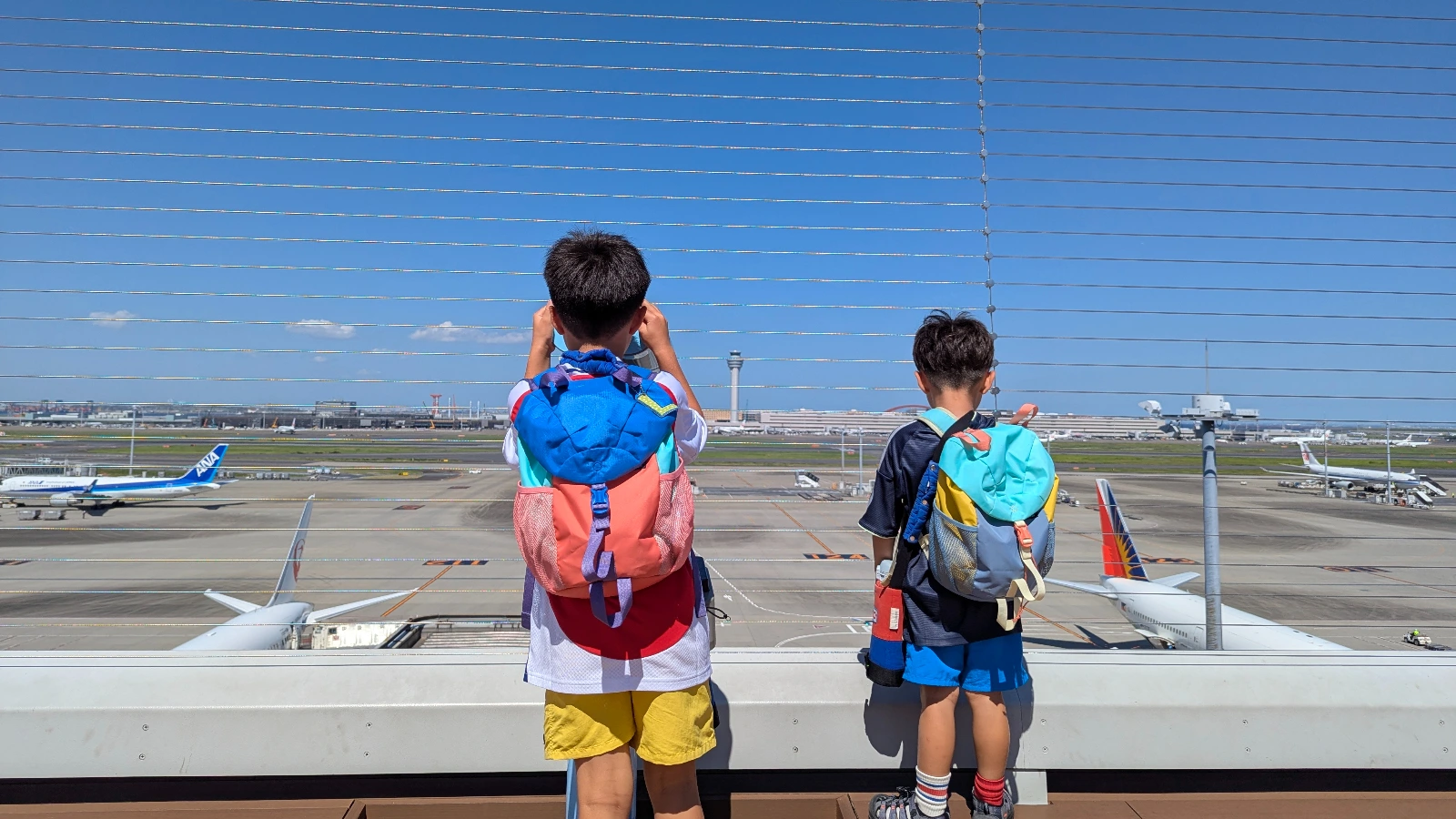
Booking your family’s flights is one of the first big steps when figuring out how to plan a family trip to Japan. Japan is well connected by international airports, and where you land can shape the flow of your entire itinerary.
Best Airports for Families
- Tokyo Haneda (HND): Closest to the city, more compact, and easier with kids. Read our guide on getting from Haneda to Toyko/Yokohama.
- Tokyo Narita (NRT): Often used by international flights, but longer travel time into central Tokyo. Check out our guide on getting from Narita to Tokyo.
- Kansai International (KIX – Osaka): Ideal if you’re starting your trip in Kyoto, Osaka, or Hiroshima.
Luca & Nico’s Tip: We always pack a little “plane survival kit” with snacks, a few surprises, and a change of clothes, just in case someone spills udon mid-air (again).
Entry Requirements for Families Visiting Japan
- Passports: Must be valid for the duration of your stay (check expiration dates now!)
- Visas: Many nationalities can enter Japan visa-free for tourism (e.g., U.S., EU, Australia, Canada). Always confirm with your local Japanese embassy.
Family Travel Baggage Tips & Prep
- Most international airlines allow free checked baggage and stroller check-in at the gate.
- If you have a layover, confirm stroller pickup details and prepare for airport walks.
- Try to book flights that land in the afternoon or evening in Japan, it can help kids sleep through that first night.
5. Family-Friendly Accommodations in Japan
Finding the right place to stay can feel overwhelming when planning a family trip to Japan, especially with young kids in tow. The good news? Japan has a wide range of clean, safe, and surprisingly family-friendly options, from traditional inns to modern hotels and cozy vacation rentals.
Ready to Plan Your Stay in Japan? The next step is finding the perfect place to rest and recharge. Our curated Hotel Guides for Fukuoka, Tokyo, Osaka, Kyoto, and Kobe are here to help you find the ideal accommodations, allowing you to plan your trip with complete confidence. For a full overview of family-friendly hotels across Japan, don’t miss our Ultimate Guide to Family Hotels in Japan.
Hotels
- Found in every major city, often near stations
- Compact but efficient rooms (check room size before booking!)
- Look for perks like breakfast, laundry machines, and free kids’ pajamas
Vacation Rentals (like Airbnb)
- Great for larger families or longer stays
- More space, kitchens, and quieter neighborhoods
- Be sure to book licensed properties, Japan regulates short-term rentals
Ryokans (Traditional Inns)
- A memorable cultural experience with tatami floors and futons
- Some welcome children, others cater to adults, check in advance
- Often include beautiful meals (which kids may or may not eat!)
What to Look For
- Proximity to transit, especially with strollers or tired feet
- Elevator access in smaller buildings
- Flexible cancellation and check-in policies
- Family rooms or connecting options
Luca & Nico’s Tip: Don’t fall for the fanciest photos. We’ve had the most fun in places near playgrounds, train stations, or snack streets, even if the room was tiny!

6. Getting Around Japan with Kids
One of the best things about traveling to Japan with kids is how easy (and safe!) it is to get around, once you understand the system. While Japan’s trains are famously punctual, stations can be big and busy, so a little prep goes a long way.
Using Trains, Subways & Buses with Kids in Japan
- Trains (JR, local lines) are great for longer distances
- Subways are ideal for city travel, especially in Tokyo and Osaka
- Buses can be useful in smaller towns or for sightseeing routes
IC Cards in Japan for Families
- Prepaid cards you tap to enter/exit most trains, subways, and buses
- Can be used for vending machines, convenience stores, and more
- Load once, use everywhere = kid travel made easier
Stroller Accessibility in Japan’s Transport System
- Most stations have elevators and ramps, but sometimes you’ll need to hunt for them
- Some older stations (especially in rural areas) may have stairs only
- Compact, foldable strollers are best, or opt for a baby carrier for smaller explorers
How Families Can Navigate Stations Like a Pro
- Avoid rush hour (7:30–9:30 AM and 5–7 PM)
- Follow the colored lines on the floor for transfers
- Teach older kids the station signs, they’ll feel proud to lead
Check out our Ultimate Family Guide to Exploring Japan by Train
Luca & Nico’s Tip: Assign roles. One adult leads with the tickets or IC card, the other follows behind to keep eyes on kids. And don’t stress, there are station staff everywhere, and they’re incredibly helpful if you need directions or help with a stroller.
7. What to Eat in Japan (Even with Picky Eaters)
Worried your kids won’t find anything to eat in Japan? Don’t be. Japan is a dream destination for food-loving families, and surprisingly accommodating for cautious eaters too. When visiting Japan with children, you’ll find a variety of options from noodles to rice balls, sweet treats to convenience store lifesavers.
Kid-Friendly Dishes to Try
- Udon noodles – Thick, soft noodles in a mild broth
- Katsu curry – Breaded pork cutlet with mild curry sauce and rice
- Onigiri – Rice balls with fun fillings, easy to find in convenience stores
- Conveyor belt sushi – Choose what you like and skip what you don’t
- Tamagoyaki – Sweet rolled omelet, often found at breakfast or in sushi
Convenience Stores in Japan for Parents
- 7-Eleven, FamilyMart, and Lawson have pre-made bentos, sandwiches, fruit, snacks, and even hot meals
- Great for grab-and-go breakfasts or last-minute snacks
- Many have microwaves and seating areas
Bento Boxes & Mix-and-Match Meals
- Pre-packed lunches sold everywhere: train stations, grocery stores, department store food halls
- Let kids choose their own to boost excitement and reduce complaints
Food Allergies & Special Diets in Japan (with Kids)
- Japan is not as allergy-aware as some countries, so bring a translated allergy card if needed
- Gluten-free and vegetarian/vegan meals exist but may take extra planning
- Pack some backup snacks for peace of mind
Luca & Nico’s Tip: Try one new snack from a convenience store every day. Nico’s favorite so far? Melon pan with chocolate chips. It’s basically dessert disguised as bread.
8. Japanese Etiquette for Kids and Families
One of the best parts of traveling to Japan with kids is the opportunity to experience a culture that values respect, quiet, and attention to detail. But that also means preparing your kids for a few key differences, and helping them understand that being polite is part of the adventure.
Public Etiquette in Japan for Families
- Inside voices are the norm, especially on public transport
- No eating or drinking (water is fine) on trains and buses (except long-distance ones)
- Shoes off indoors, look for signs or step-up thresholds in homes, ryokans, temples, and some restuarants
- Lines and order matter, from elevators to escalators, people queue patiently
Shrine & Temple Etiquette with Kids
- Teach kids to wash hands at the purification fountain
- Bow once at the torii gate entrance and exit
- Watch and gently copy what locals do, no need to be perfect
- Ema plaques (wooden wish boards) are a fun way for kids to leave their mark
Embrace the Quiet
- Japan’s cities may be big, but they’re surprisingly quiet
- Encourage kids to “spot the silence” or listen for nature sounds in urban parks
- Make it a game to move quietly and watch others
Parent Insight: Cultural immersion doesn’t have to mean perfect behavior, it’s about participation with respect. Let your kids try bowing, clapping, or making a wish. The more they engage, the more deeply they connect.
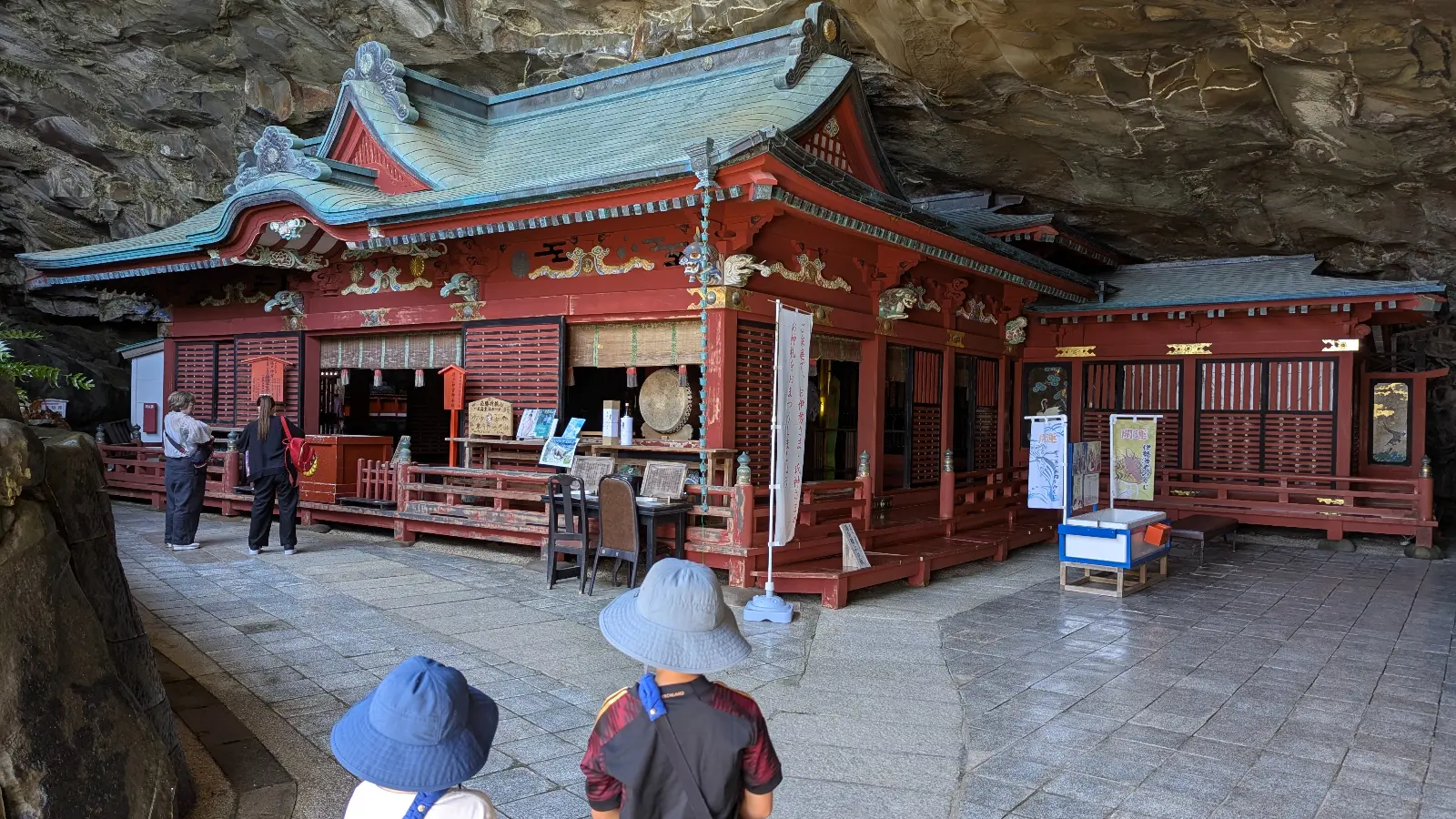
9. How to Plan Your Japan Family Itinerary
When you’re planning a family trip to Japan, it’s tempting to pack your days full of castles, temples, sushi spots, and theme parks. But here’s the truth: less really is more, especially when traveling to Japan with kids.
Start with a Simple Daily Rhythm
- Aim for 1–2 main activities per day
- Build in time for snacks, stroller breaks, and spontaneous exploring
- If you’re changing cities, treat travel days as “light” days
Age-Specific Planning Tips
- Toddlers & preschoolers (Ages 2–5): Prioritize stroller-friendly walks, parks, and interactive museums
- Early elementary (Ages 5–9): Mix fun attractions (zoos, aquariums, trains) with short cultural stops
- Older kids (Ages 10+): Give them input! Let them help pick activities or learn key phrases in Japanese
Sample Itinerary Ideas
7-Day Trip (First-Timers)
- Tokyo 4 nights (with a day trip to Yokohama or Hakone)
- Kyoto 3 nights (temples, geisha district, monkey park)
14-Day Loop
- Tokyo → Kyoto → Osaka → Hiroshima → Tokyo return
- Includes historical stops, city energy, and playful fun
Best Planning Tools for Family Travel in Japan
- Google Maps (save locations + get transit directions)
- Navitime Japan Travel (custom route planner)
- Klook (pre-book attractions or passes in English)
Luca & Nico’s Tip: We each get to pick one “must-do” in every city. Then we draw it in our journal after. It helps us stay excited… and get along.
10. What to Pack for a Family Trip to Japan
Japan’s cities are safe, clean, and well-stocked, but when visiting Japan with children, it helps to be prepared. Whether you’re heading into temple towns, train stations, or cherry blossom parks, smart packing can save time, tantrums, and backaches.
Must-Have Essentials for Japan with Kids
- Lightweight stroller or baby carrier (depending on age and terrain)
- Comfortable shoes: Japan = lots of walking
- Weather-ready layers: umbrellas in spring, hats in summer, warm coats in winter
- Medicine kit: Japan’s pharmacies don’t always carry familiar brands (Be sure to read this first)
- Snacks from home, especially if your kids have specific preferences
Helpful Extras for Traveling in Japan with Children
- Hand sanitizer or wipes (many places don’t have paper towels)
- Power adapters (Japan uses Type A plugs, 100V)
- Small gifts from your home country, great for homestays or thank-you moments
- Reusable shopping bags (eco-friendly and useful)
What Not to Bring on a Japan Trip with Kids
- Oversized luggage (tricky on trains and in hotel rooms)
- Bulky strollers for older kids, compact is key
- Too many toys, Japan’s souvenirs and capsule machines are fun surprises!
Luca & Nico’s Tip: We each pack an “adventure bag” with 3 things: a small toy, a snack, and something to draw or write with. It turns any train ride into a mini mission.
11. How Much Does a Family Trip to Japan Cost?
When planning a family trip to Japan, the first question many parents ask is, “How much is this going to cost?” The good news? Japan can be surprisingly affordable, especially if you plan ahead and know where to save vs. splurge.
What to Expect Budget-Wise on a Family Trip to Japan
- Meals: Budget ¥1,000–¥2,500 per person per day (more if eating at sit-down restaurants daily)
- Transport: Subways and local trains are inexpensive; intercity routes add up quickly
- Attractions: Many parks, shrines, and museums are free or low cost, many even have child discounts
- Accommodation: Varies widely, but clean family hotels are often available in the ¥¥ range
Where Families Tend to Overspend
- Overbooking activities in multiple cities (transport adds up!)
- Buying too many souvenirs too early
- Eating only at tourist restaurants, don’t skip the konbini and food courts!
Parent Tip: Plan a few “splurge moments” (like a ryokan stay or special experience), but balance it with downtime and free parks. Sometimes the best memories cost nothing.
Want more detail? Check out our full post: How to Travel Japan on a Family-Friendly Budget
12. Safety, Health & Emergencies in Japan with Kids
Japan is one of the safest and cleanest countries in the world, which makes visiting Japan with children feel less intimidating than you might expect. Still, a little preparation can help you handle unexpected moments with confidence.
Medical Help & Pharmacies in Japan for Families
- Hospitals and clinics are modern, with some English-speaking staff (especially in major cities)
- Pharmacies (look for “薬” or “kusuri”) carry over-the-counter meds, but brands may differ
- Travel insurance is strongly recommended, double check that it covers kids and minor injuries
If You Get Lost or Separated
- Teach kids to look for police boxes (“koban”) or station staff
- Print a card with your hotel name, phone number, and your number in case of emergencies
- Use a family meeting spot system at big locations like stations or parks
Bathrooms, Changing Tables & Clean Facilities
- Public restrooms are widely available, many include child seats, diaper-changing tables, or even toddler sinks
- Department stores, train stations, and large parks usually have accessible baby rooms
General Safety Tips for Families in Japan
- Japan has very low crime, but always supervise children near train platforms, busy crossings, or unfamiliar neighborhoods
- Keep an eye on smaller kids around vending machines, capsule toy stands, and souvenir shops
Parent Tip: Write your hotel name, your number, and a local emergency contact on a small card or sticker your child can carry in their pocket or backpack, just in case.
13. How to Make Japan Memorable for Kids
Beyond the temples, trains, and snacks, the most meaningful parts of traveling to Japan with kids often come from the little moments, when curiosity takes over and the experience becomes theirs.
Here’s how to spark that magic:
Give Them a Mission
- Turn sightseeing into a game: Who can spot the most vending machines? Find the cutest mascot? Draw the weirdest fish they see?
- Use a simple travel journal or sketchpad to capture daily highlights
- Collect Goshuin (temple stamps), train tickets, or capsule toys as tiny memory markers
Let Them Lead (Sometimes)
- Ask them to choose a snack, navigate a map, or decide the next stop
- Give them one “decision card” per day, even if it just means picking lunch
Kid-Friendly Ways to Prep Before You Travel to Japan
- Watch kid-friendly anime or shows set in Japan
- Read picture books or YouTube walk-throughs of shrines and castles
- Practice a few simple Japanese words (hello, thank you, excuse me)
Luca & Nico’s Challenge: Try something new in every city, even if it’s weird, wobbly, or totally unexpected. Then draw it or snap a photo. That’s your adventure badge!
FAQs: How to Plan A Trip to Japan with Kids
Planning a family trip to Japan comes with lots of questions, from costs and kid-friendly cities to what to pack and how to get around. These FAQs answer the most common concerns parents have when organizing a Japan trip with kids.
A: For most families, a trip to Japan costs ¥20,000–¥40,000 per day, depending on lodging, food, and transportation. Families on a budget can stay closer to ¥20,000 daily by using public transit, eating at local restaurants, and choosing business hotels or guesthouses.
A: The ideal length for a Japan family trip is 10–14 days. This gives enough time to explore Tokyo, Kyoto, and one more city, while balancing sightseeing with downtime so kids don’t feel rushed.
A: The best cities in Japan for families include Tokyo (museums, parks, and entertainment), Kyoto (temples and cultural experiences), Osaka (food, aquariums, and theme parks), and Fukuoka (kid-friendly beaches and spacious parks). Each offers unique attractions for children of all ages.
A: The best airports in Japan for families are Narita (NRT) and Haneda (HND) in Tokyo, and Kansai International (KIX) in Osaka. These airports offer the most international flights, family-friendly facilities, and easy transport links to major cities.
A: Families in Japan can stay in hotels with family rooms, serviced apartments, traditional ryokan inns, or vacation rentals. Many properties provide baby cots, extra beds, and laundry facilities, making them convenient for traveling with children.
A: The easiest transport options in Japan for families are trains (with Japan Rail Passes or regional passes), city subways, and local buses. Public transport is clean, safe, and mostly stroller-friendly. For extra convenience, families can also use taxis or rental cars.
A: Picky eaters in Japan can enjoy familiar and simple meals such as rice dishes, noodles (ramen, udon), grilled meats, and tempura. Many restaurants also serve kid-friendly menus, and convenience stores (konbini) offer affordable bentos, sandwiches, and snacks that children love.
A: Families should remember a few important etiquette rules in Japan: remove shoes when entering homes or certain indoor spaces, speak quietly in public, queue patiently, and avoid eating while walking. Teaching kids these habits makes travel smoother and shows respect for local culture.
A: Yes, Japan is one of the safest countries for families. Crime rates are very low, public spaces are clean, and locals are helpful. Parents should still supervise kids in busy areas like train stations or shopping streets, but overall, Japan is known for being safe and family-friendly.
A: To plan a family trip to Japan, start by choosing travel dates, setting a budget, and picking family-friendly cities like Tokyo, Kyoto, or Osaka. Book flights and accommodations early, and create a balanced itinerary with both sightseeing and rest days. Consider train passes and add kid-focused activities for smoother travel.
A: Key Japan family travel tips include booking family rooms in advance, using regional train passes, and packing light. Schedule downtime for kids, always carry some cash (many places don’t accept cards), and check for child discounts at attractions.
A: The best family vacation ideas in Japan include theme parks like Tokyo Disneyland, exploring Kyoto’s temples, visiting Osaka’s aquarium and food districts, relaxing on Okinawa’s beaches, and discovering unique museums in Tokyo and Nagoya. These activities balance fun, culture, and kid-friendly adventure.
A: Japan is great for all ages, but the best age range for kids is often 5–12 years old, when children can walk more easily, enjoy cultural sites, and still be amazed by theme parks. Teens love Japan’s mix of history, anime, and shopping, while toddlers can enjoy playgrounds, aquariums, and stroller-friendly parks.
A: For a family trip to Japan, pack comfortable walking shoes, light layers, a small umbrella, and a baby carrier or stroller for younger kids. Bring cash in yen (many places don’t take cards), refillable water bottles, and small entertainment for train rides. Seasonal extras like coats in winter or cooling towels in summer are also useful.
A: Yes, travel insurance is recommended for Japan, especially when traveling with kids. It covers medical emergencies, trip cancellations, and lost luggage, offering peace of mind in case of unexpected situations. Many policies also include coverage for children at no extra cost.
Until Next Time…
Planning a family trip to Japan doesn’t have to be overwhelming. You don’t need to speak the language fluently, see every temple, or map out every snack stop to make it unforgettable. What matters most is being open… to wonder, to wobbly moments, to letting your kids lead the way sometimes. Start small. Build your Japan family itinerary one step at a time. And remember: every walk through a shrine gate, every silly vending machine, every moment of awe on a train platform is a memory in the making… and those are the Best Souvenirs!
Stay curious, stay adventurous, and keep dreaming!
~ The LuNi Travels Family ~


